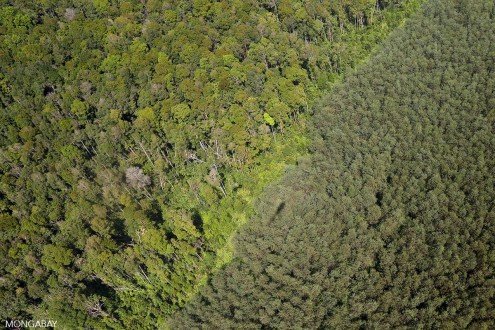- A new study on the reliability of media coverage of the illegal wildlife trade in Nepal has found that, while useful, media reports only cover a small fraction of seizures and focus mostly on large, charismatic species
- The researchers say wildlife reporting practices create ‘feedback loops’ that may reinforce biases and can further entrench official responses to wildlife crime
- To counteract this trend, the researchers propose raising awareness among journalists as to how their reporting can influence public opinion and official responses to wildlife crime
KATHMANDU — Media reporting of wildlife crime in Nepal covers only a small fraction of the trade in the country, with a heavy focus on charismatic protected species such as tigers, a new study has found.
Researchers from the University of Oxford looked at wildlife crime coverage in three daily newspapers in Nepal between 2005 and 2017, as well as official seizure reports and enforcement actions.
Kumar Paudel of the NGO Greenhood Nepal, who co-authored the paper, said that although media reports provided an indication of trends and the species being seized, journalists had reported a fraction of cases of illegal wildlife trade-related seizures.
“Seizures related to charismatic protected species such as rhinos and tigers were reported the most, seizures involving tigers were most likely to be reported,” he said.
According to the paper, in the case of the Kathmandu district nearly 78% of the seizures went unreported. Seizures of charismatic, protected species were reported more frequently and seizure reports involving tigers were the most likely to be receive coverage.
Nepal, due to its rich biodiversity diversity, is home to some of the world’s most prized wild animals and plants. Its location between China and India, the largest markets for legal and illegal wildlife products, has made it a source as well as a transit country for the multi-billion-dollar trade in wild flora and fauna.
“The media plays a crucial role in setting the agenda for conservation,” says Paudel. “In the context of trafficking of wildlife and their parts, stories in the media are even more important as they serve as the source of information for national and international [research].”
“We could attribute these biases to the level of interest editors and reporters have in the wildlife trade or their access to information on seizures, more attention on some species than others, and the importance given to other competing news stories,” he added.
According to Dr. Diogo Verissimo, a research fellow at the Oxford Martin Programme on the Illegal Wildlife Trade, who also co-authored the study, the reporting of wildlife crime, official reaction to it and the public opinion created by it creates a “feedback loop” that often reinforces existing approaches to tackling the issue.
“Until recently, only a few people knew about pangolins and the illegal trade in their scales,” he said. “But in the past few years the issue has received a lot of media attention. This has been good in the case of pangolins as people are more aware of it. In this case, we see a positive feedback loop.”
However, the effect of the media on wildlife trade awareness and responses is not always so positive, he adds. In Nepal, for example, the focus on megafauna such as tigers and rhinos has led the public and policy makers to view them as the most highly traded and threatened species, leading officials to prioritize training and policy dealing with the trade in rhino horn and tiger parts.
“There are many other wildlife products, such as orchids and medicinal plants, that are traded in large volumes, but are not prioritized,” Paudel says.
Such “feedback loops” can further influence future funding and scientific research, the paper notes, as the reliance on reported seizures means more emphasis is placed on the species that officials are dedicating resources towards.
Despite such drawbacks, media reports are likely to remain an important tool for conservationists studying the illegal wildlife trade, though caution must be taken when drawing wider conclusions, the authors noted.
The study also noted that the transition away from traditional media in many countries meant the findings were limited, adding that the shift to social media would change people’s perceptions of the trade.
“For example, the competition for page space or time which affects the print and broadcast media may loosen, such that more seizure reports may be placed online. However, it may also be that a reduction in professional staff may reduce the investigative focus on particular issues, such that even if more material is present, the prominence of particular items in online media may be driven more by social media trends and public concern,” the paper stated.
For Verissimo, the major takeaway for journalists reporting wildlife crime is that they need to be more aware of the implications of their work.
“I think that’s it’s important that media professionals recognize that they play an important role in the feedback loop. And if we have a negative feedback loop, they are really in a key privileged position to invert that and turn that into a positive feedback loop.”
Feedback: Use this form to send a message to the editor of this post. If you want to post a public comment, you can do that at the bottom of the page.
Banner image: A greater one-horned rhino in Nepal’s Chitwan National Park. Photo by Dhilung Kirat via Flickr.
Citations
Paudel K, Hinsley A, Veríssimo D, Milner-Gulland E. Evaluating the reliability of media reports for gathering information about illegal wildlife trade seizures. PeerJ. 2022 Apr 5; 10:e13156. doi: 10.7717/peerj.13156.












